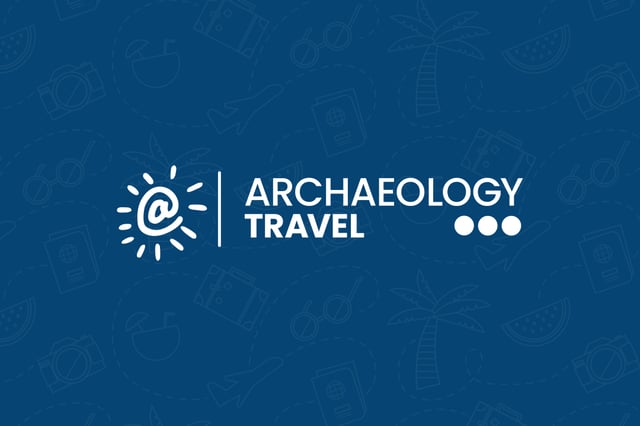Roman Sites & Museums in Bulgaria
Lands in and around present-day Bulgaria were incorporated into three Roman provinces: Moesia, Dacia and Thracia. Macedonia had been conquered by Rome in 196 BC, but was divided in 6 AD creating Moesia. In 188 BC Romans entered Thrace, by 46 CE the Roman province of Thracia was created. Dacia was conquered in 107 AD by Trajan. Important and influential centres developed, and include what are today Sofia, Plovdiv and Stara Zagora. By the end of the 4th century AD the Goths were in northern Bulgaria, followed later by the Huns and Slavs.
Roman Sites in Bulgaria
Amphitheatre of Serdica
In 2004 during excavations for the 5* Arena di Serdica Hotel builders came across a Roman wall. Following archaeological excavations, these remains turned out to be those of the amphitheatre built just outside the walls of the Roman city of Serdica. Coins discovered suggest that the structure was built in the 3rd or 4th century CE. And, beneath the amphitheatre are the remains of a 2nd century theatre. Remains of the amphitheatre have been restored for guests and visitors alike.

Castra Martis
In the present-day town of Kula is the Roman fortress Castra Martis. The fort was built to provide military protection to the road that went over the nearby Vrashka Chuka Pass in the western Balkan mountains. A typical late Roman quadriburgium, this is a four sided, square structure that measures 40 by 40 metres with thick-walled round towers on the corners, each about 12.5 metres in diameter. Remains of other Roman structures have been found nearby, including a bathhouse and a military camp

Roman Hisarya – Diocletianopolis
The natural springs in Hisarya have been attracting people for thousands of years. Although evidence of prehistoric and Thracian occupation has been found around the town, Hisarya is best known for its impressive Roman remains. These include the military barracks, public baths, a small amphitheatre and defensive walls that still stand to near original height in many places. Hisarya was one of the three most important towns in the Roman province of Thrace, then called Diocletianopolis or Augusta.

Roman Plovdiv – Trimontium
Lucian of Samosata described Plovdiv as “the largest and most beautiful of all cities.” Although not the capital of the Roman Province of Thrace, it was the most important and largest city in the region. Hence the large-scale construction of buildings by the Romans. Some of these survive today making this a great city to visit for archaeology. These include a forum, a stadium, two basilicas and a theatre that has spectacular views over the city onto mountains to the south.

Roman Stara-Zagora - Ulpia Augusta Traiana
Although the city was founded by Phillip II of Macedon in 342 BCE, Thracians had a settlement here as early as the 5th century BCE. Under the Romans the city was named Ulpia Augusta Traiana after Trajan, and it became the capital of the Roman province of Thrace. By the end of the 2nd century CE the city had the right to mint its own coins, a sign of its importance. At the centre of the city today are the remains of the Roman forum complex, about 7 acres of which are exposed. Various architectural features can be seen.

Museums with Roman Collections in Bulgaria
Archaeological Museum, Sozopol
Sozopol’s archaeological museum, which includes the St. Cyril and St. Methodius Temple, displays the history of ancient Sozopol from the 5th millennium BCE to the 18 century CE, and Christian art from the 17th to 19th centuries. In all there are over 1,000 objects on permanent display. Including an alabaster casket said to contain the relics of John the Baptist – found on the nearby island of St Ivan in 2010. These relics placed the museum at number eight on a list of the top 100 tourist sites in Bulgaria.

National Archaeological Museum, Sofia
The National Archaeological Museum, a branch of the National Archaeological Institute, is housed in Sofia’s oldest and largest Ottoman mosque. Construction of the mosque began in 1451, after the War of Liberation it was used as a hospital and then a printing shop before being established as a museum in 1892. Permanent exhibits cover the range of Bulgaria’s past, from Stone Age artefacts some 1,6 million years ago to exquisite wall paintings of the Later Medieval.

Regional Historical Museum in Pleven
The Historical Museum in Pleven (Регионален исторически музей) is one of the largest in Bulgaria. Over 5,000 objects tell the story of the region’s archaeology, ethnography, the Bulgarian National Revival and the Ottoman rule of Bulgaria, modern history, and natural history. In particular, the numismatic collection of some 25,000 coins is one of the richest in Bulgaria. The building is itself a historical landmark, built in the 1880s by an Italian architect to serve as a military barracks.

Regional Museum of History, Stara Zagora
Located in the centre of town, this regional history museum showcases only a fraction of the finest artefacts that illustrate the historical development of Stara Zagora from the early Neolithic to the Resurrection of the city in 1879 having been burned during the Russian -Turkish war. During the construction of the existing building (opened in 2009), the remains of the the main street, cardo maximus, were found, complete with columns, statues and stone reliefs; restored and presented in situ.









